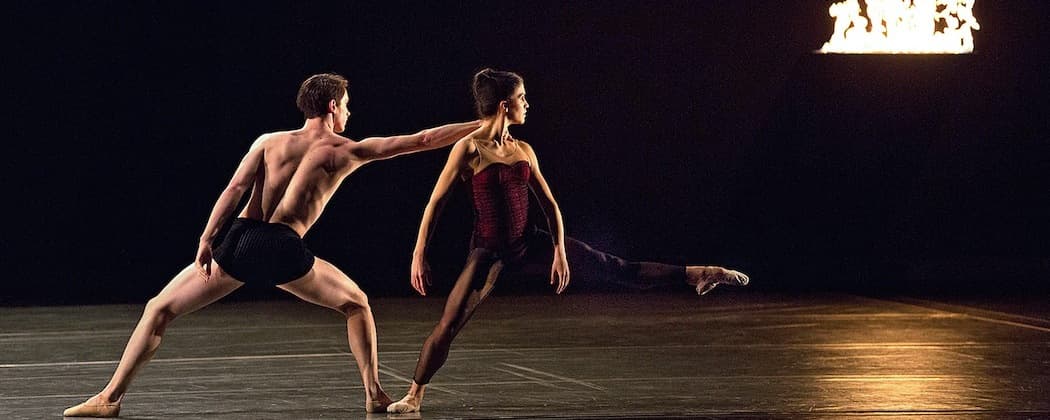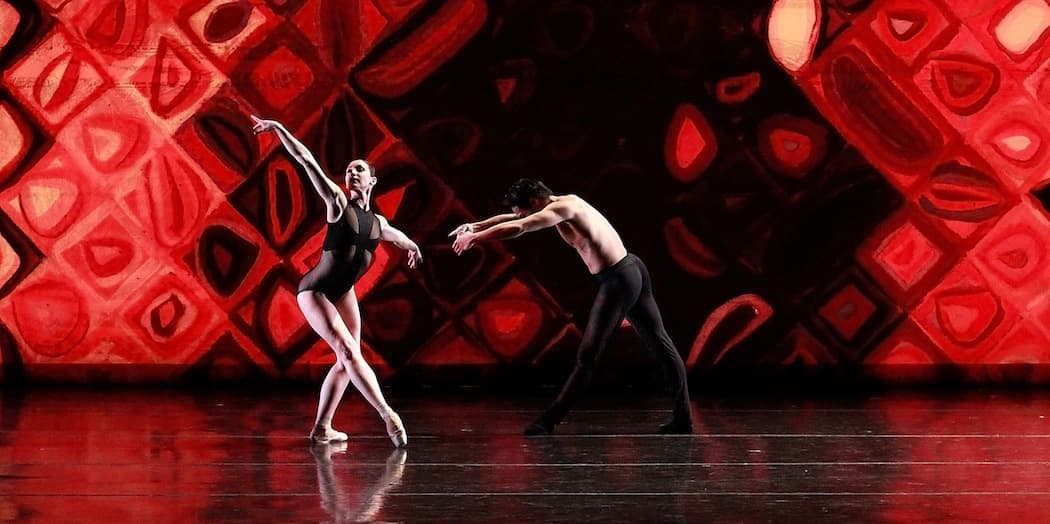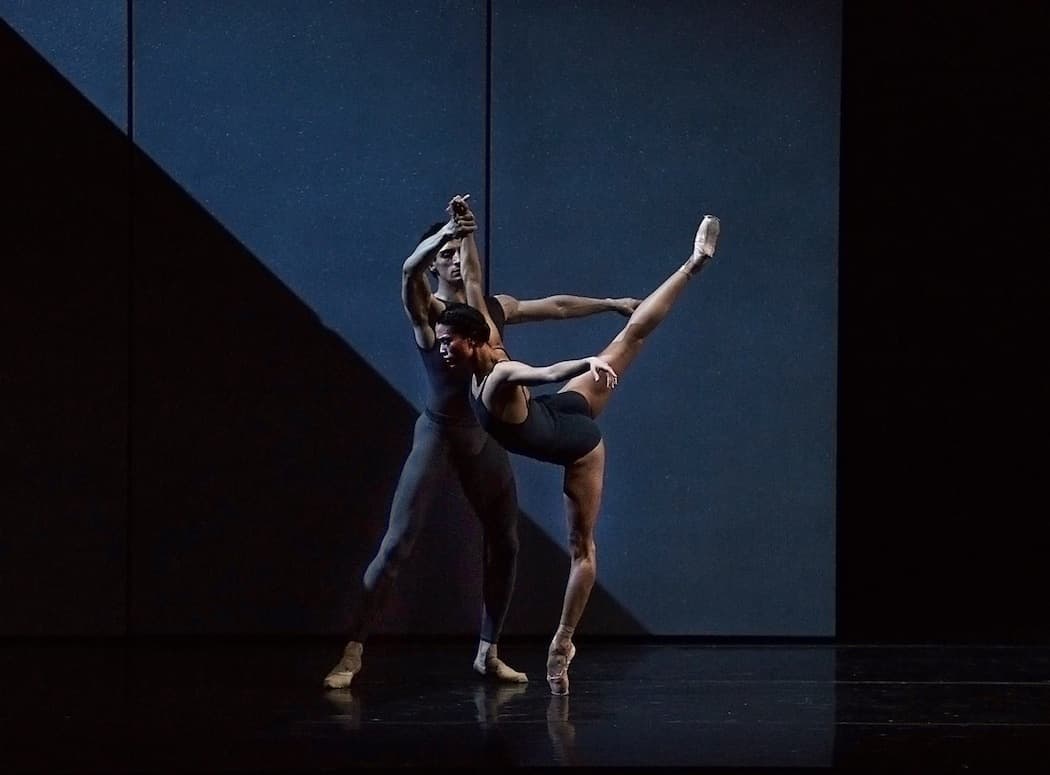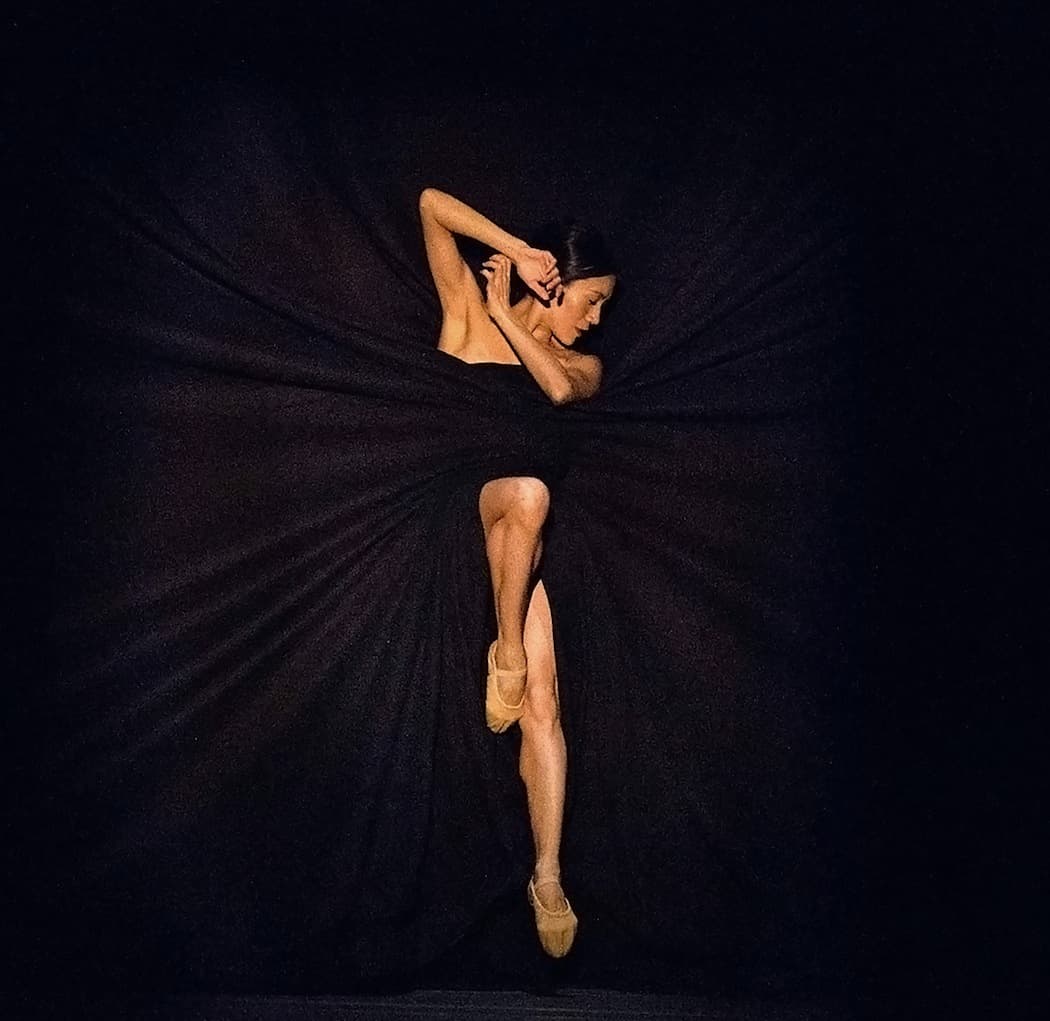Advertisement
All Hail 'Chuck' — Boston Ballet Puts All The Pieces Together

BOSTON — A golden silence floods the Boston Opera House, as Boston Ballet’s Petra Conti and Sabi Varga slowly walk offstage, shoulder-to-shoulder. Yet, as soon as the curtain hits the floor, the audience erupts.
Boston Ballet’s “Close to Chuck” (through March 2) ends in tranquility, but the majority of the performance is anything but calm. Perhaps the fires blazing on either side of the stage in Jiří Kylián’s “Bella Figura” best reflect the aura of Thursday’s opening night performance. The dancers performed with explosive energy, while remaining incredibly in sync with one another.
Unlike story ballets, triple bills portray the raw technique behind the art form. This program did just that, featuring “C. to C. (Close to Chuck) reborn” by Resident Choreographer Jorma Elo, “Resonance” by José Martinez, and “Bella Figura” by Jiří Kylián.
Relationships seem to be an overriding theme throughout the program. The dancers, the costumes, the sets, and the music – all are equally important to the final product. In two of the pieces, the pianists even appear onstage alongside the dancers.

At the start of the performance, the curtain rises and the audience comes face-to-face with a set of large eyes gazing through circular rimmed glasses. The eyes resemble those of Dr. T.J. Eckleburg on the billboard in “The Great Gatsby” — peculiar, invasive, and mystical. Spotlights frame the dancers, and they move as if they were marionettes. The gray-toned stage contributes to the feeling of loneliness before Varga reaches out to touch the shoulder of pianist Bruce Levingston. A curtain flies up behind Varga, revealing the same set of haunting eyes colored by brilliant shades of red. Not one aspect of “C. to C. (Close to Chuck) reborn” is out of place. Even the costumes connect to the backdrop; the same portrait is seen on the dancers’ skirts.
The cast includes Kathleen Breen Combes, Lia Cirio, Whitney Jensen, Jeffrey Cirio, John Lam, and Varga. While their technique is impeccable, their ability to execute Elo’s musicality with such precision is most impressive.
There is history behind this ballet; its inspiration stems from the friendship between artist Chuck Close and composer Philip Glass, going back to their meeting in Paris of 1964.
Levingston plays this piece beautifully. The ballet ends with the six dancers in a line reaching toward him, a nice choreographic statement showing the close relationship between the two art forms.

“Resonance” is another work in which the choreographer, José Martinez, masterfully plays with the elements of the production. The sets are simple panels that move around, adding an interesting dimension to the ballet — almost like a game of hide-and-seek. Pianist Freda Locker appears and disappears, as do the dancers. A second pianist, Alex Foaksman, plays from the orchestra pit.
This world premiere begins and ends with a feeling of solitude, as Lia Cirio walks alone along a strip of light that emanates from the side of the stage. Yet, with Franz Liszt’s stirring music comes commotion; dancers fill the scene, performing a variety of movement that is often overwhelming.
After watching Elo’s choreography, which is so closely tied to the music, “Resonance” seems disconnected. In one instance, the women form a diagonal line and perform a mesh of worm-like movements that look out of place with the Balanchine-type leotards and the classical music.
However, the large cast of dancers performs admirably. Dusty Button and Alejandro Virelles shine through their solos; both seeming perfectly at ease with the vigorous choreography.
The performance ends with Jiří Kylián’s “Bella Figura,” – “beautiful figure.” The ballet starts with the house lights still up, as if the audience is viewing a private rehearsal, observing dancers as they process their thoughts and analyze their movements.

Kylián seems to be focusing on perception of self, and the connections between humanity. At times in the piece, the men and women are no different, all topless in long, red skirts. The dancers perform the choreography meticulously, and their exaggerated muscle articulation contributes to the ballet’s sensuality. As the solo woman, Rie Ichikawa performs with both vulnerability and resilience.
Each of the three ballets sets a different mood, but they combine to form a cohesive performance. From the vitality of Elo’s “C. to C. (Close to Chuck) reborn” to the romantic sadness of José Martinez’s “Resonance” to the unguarded honesty of Jiří Kylián’s “Bella Figura,” the program is an all-around visual experience — a spectacle challenging, powerful, and mesmerizing, for dancers and audience alike.
Lawrence Elizabeth Knox is a junior, journalism major in Boston University’s College of Communication. Prior to BU, she was a professional ballet dancer with Tulsa Ballet. She may be contacted at knoxlawrence@gmail.com.